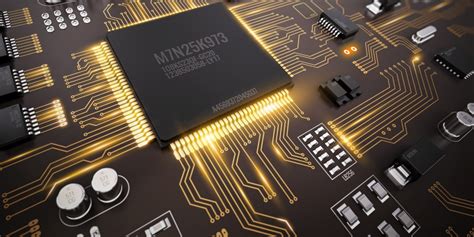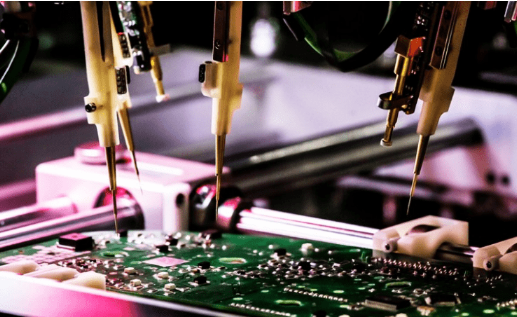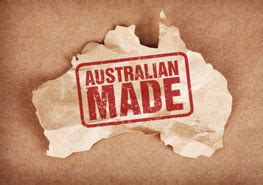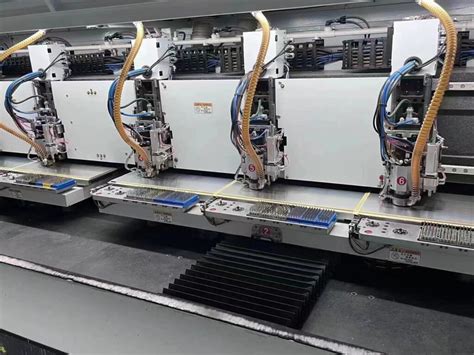Revolutionizing Electronics with Custom PCB Printing and Assembly
Key Takeaways
Custom PCB printing and assembly, often referred to as PCBA, are at the forefront of transforming the electronics landscape. As technology evolves, the demand for more sophisticated and tailored solutions increases. Custom PCBs not only allow for personalization but also significantly enhance design flexibility and manufacturing efficiency. One of the key advantages lies in their ability to support highly specialized applications across various industries, from consumer electronics to medical devices. This adaptability leads to innovations that push the boundaries of what is possible in electronic design. Furthermore, the integration of automation into the PCB assembly process streamlines production, minimizes errors, and significantly reduces turnaround times. As a result, companies can respond swiftly to changing market demands while maintaining high-quality standards. The future looks promising for custom PCB printing and assembly as advancements in technology continue to create opportunities for even more effective applications tailored to unique specifications. By understanding these dynamics, stakeholders can better navigate the evolving landscape of electronics manufacturing and harness its full potential.
The Evolution of PCB Technology: A Brief History
The journey of PCB technology has been nothing short of remarkable, evolving from simple designs to complex, multi-layered circuits that power today’s electronics. Initially, printed circuit boards were mainly used for basic connectivity; however, as the demand for more sophisticated electronic devices grew, so did the complexity and functionality of PCBs. With advancements in materials and manufacturing processes, pcb assembly has become more precise and reliable. Early methods relied on manual processes, but as technology progressed, automation started to play a significant role in assembly operations. This shift not only improved efficiency but also allowed for the production of high volumes of PCBA while maintaining quality standards.
As we delve deeper into this evolution, it’s crucial to recognize the impact of custom PCB printing on the landscape. The ability to create tailored solutions has empowered businesses to innovate without constraints. Today’s manufacturers can design boards specific to various applications—from medical devices to consumer electronics—making custom PCBs a fundamental element in pushing the boundaries of what modern devices can achieve.
“In the electronics sector, innovation thrives on adaptability; custom PCB printing offers that flexibility.”
By understanding this evolution and embracing modern techniques such as pcb assembly, industries can harness efficiency and open new avenues for development. The future holds tremendous potential as technology continues to evolve rapidly—pointing towards even more advanced applications and smarter solutions tailored for an increasingly interconnected world.
Key Advantages of Custom PCB Printing and Assembly
Custom PCB printing and assembly systems provide a range of significant benefits, particularly in today’s fast-paced technological landscape. The most notable advantage is the ability to design tailored solutions that meet the specific requirements of a project. By utilizing custom PCBs, companies can ensure that each board is optimized for its intended application, whether it’s for consumer electronics, medical devices, or automotive systems. This level of customization enhances performance and reliability while also reducing unnecessary costs.
Another key advantage is the increased efficiency that comes with modern manufacturing techniques. Advanced printing methods allow for faster production cycles and improved accuracy in circuit layouts, which are imperative in today’s competitive market. This means companies can bring their products to market more quickly while maintaining high quality. Efficient pcb assembly processes further contribute to this speed, enabling businesses to scale their production capabilities without sacrificing fidelity.
A comparison table below illustrates some of the primary advantages:
| Advantage | Benefit |
|---|---|
| Customization | Tailored designs for specific applications |
| Efficiency | Faster production cycles with high accuracy |
| Cost-effectiveness | Reduction in material waste and optimized designs |
| Scalability | Ability to increase production without quality loss |
| Innovation Facilitation | Encourages unique designs that fuel industry progress |
Incorporating these benefits, businesses can leverage custom pcba solutions not merely as components but as critical drivers of innovation and competitiveness within varied sectors. The potential for advancement in electronics is tremendous when combining custom techniques with automated assembly processes that ensure precision and quality throughout production stages.

How Custom PCBs Foster Innovation in Electronics
The advancement of custom printed circuit boards (PCBs) and their associated pcb assembly techniques is significantly driving innovation within the electronics sector. By allowing engineers and designers to create highly specialized circuit layouts, custom PCBs empower the development of tailored solutions that cater to specific application requirements. As a result, industries ranging from healthcare to automotive benefit from enhanced performance and reliability. The pcb assembly process integrates intricate designs with precision components, streamlining manufacturing and reducing time-to-market, thus fostering a culture of rapid prototyping and iterative design. Moreover, custom PCBs facilitate the incorporation of emerging technologies, such as IoT devices and wearable electronics, enabling more sophisticated functionalities while keeping size and cost constraints in check. This evolving landscape showcases how pcba is not merely about producing circuit boards but is a cornerstone for pioneering advancements across various fields, leading to smarter products and systems that redefine user experiences.
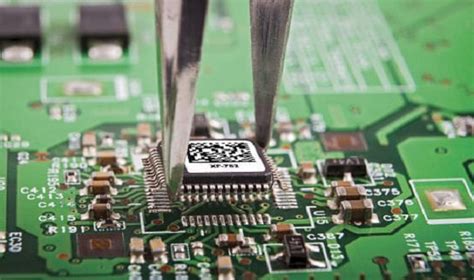
Tailored Solutions: Meeting Diverse Industry Needs
Custom PCB printing and assembly have emerged as pivotal solutions in a landscape where diverse industries demand tailored electronic components to meet their specific requirements. The flexibility offered by custom PCBA allows manufacturers to create unique designs that address the nuances of various applications, from consumer electronics to complex industrial machinery. By leveraging advanced technology, companies can develop PCBs that not only meet stringent technical standards but also enhance performance and reliability. This adaptation is particularly vital in fields such as automotive and medical devices, where precision and durability are paramount. Furthermore, customized solutions facilitate faster prototyping, enabling businesses to bring their innovations to market swiftly while also significantly reducing production costs. As industries continue to evolve, the integration of custom PCB printing and assembly will play an essential role in providing versatile, efficient, and effective solutions tailored precisely for an array of demanding applications. This advancement not only underscores the importance of tailored approaches but also paves the way for future innovations, ensuring that every industry can meet its unique challenges head-on.
The Role of Automation in PCB Assembly
The integration of automation in PCB assembly processes represents a significant advancement in the electronics sector. Automation enhances efficiency, reduces human error, and accelerates production timelines for printed circuit board assemblies (PCBA). One of the key benefits of automated systems is their capability to perform repetitive tasks with precision. For instance, automated pick-and-place machines can accurately position components on PCBs at speeds far exceeding manual assembly methods. This not only contributes to a higher output but also allows for greater design complexity, as intricate layouts can be executed with confidence.
Furthermore, automation facilitates the consistent quality control that is crucial in pcba processes. Automated inspection systems employ advanced technologies such as machine vision to detect defects and ensure that each assembly meets stringent quality standards. The implementation of such technologies minimizes the risk of faults that could lead to product failures, thereby enhancing the reliability of electronic devices.
As industries continue to evolve and demand more sophisticated solutions, automation in PCB assembly is poised to play an even more crucial role. By streamlining operations and fostering innovation, it paves the way for tailored applications across diverse sectors, ultimately pushing the boundaries of what is achievable in the electronics landscape.

Future Trends in Custom PCB Printing and Assembly
As the electronics landscape continues to evolve, custom PCB printing and assembly techniques are setting the stage for a new era of innovation and efficiency. One of the most notable trends is the increasing integration of smart technologies into the pcb assembly process. Advances in artificial intelligence and machine learning are streamlining production workflows, optimizing designs, and minimizing errors during pcba. Additionally, the rise of IoT (Internet of Things) devices demands more versatile and compact PCB solutions. Manufacturers are responding with custom designs that not only meet specific functional requirements but also accommodate evolving technological standards.
Sustainability is another pivotal area of focus; companies are investing in eco-friendly materials and processes, reducing waste, and enhancing energy efficiency throughout their operations. This conscientious approach not only benefits the environment but also aligns with growing consumer demand for sustainable products. Moreover, as 3D printing technology matures, it offers exciting possibilities for rapid prototyping in custom PCB design, enabling faster turnaround times and reduced costs.
In summary, these trends signify a paradigm shift where custom PCB printing and assembly will empower a new generation of electronic devices that are more efficient, sustainable, and tailored to meet diverse industrial needs. The future holds great promise for these technologies as they continue to shape innovations across various sectors.
Case Studies: Successful Applications of Custom PCBs
The implementation of custom PCB printing and assembly has led to remarkable advancements across numerous industries, showcasing its versatility and effectiveness. In the realm of medical devices, companies have utilized pcb assembly to create compact, efficient circuits that support cutting-edge diagnostic tools. For instance, innovative wearables designed for patient monitoring rely on pcba techniques to ensure durability and flexibility, ultimately enhancing patient care. Additionally, in the automotive sector, manufacturers are increasingly adopting custom PCBs to integrate advanced technologies such as autonomous driving systems. The precision offered by custom PCB printing allows these companies to push the boundaries of what is possible in automotive safety and convenience. Furthermore, the consumer electronics industry benefits from tailored solutions that meet specific market demands, such as energy efficiency and connectivity features. Overall, these case studies not only illustrate the transformative power of custom PCBs but also highlight their potential to drive innovation across various fields by enabling unique designs and improved functionalities.
Navigating Challenges in the PCB Development Process
The journey of PCB assembly can often be fraught with challenges that need careful navigation to ensure a successful outcome. One primary concern is the complexity associated with design intricacies. As electronic devices become more sophisticated, the demands on printed circuit boards (PCBs) grow, requiring innovative solutions to achieve high-density layouts without compromising on performance. Additionally, aligning with the stringent standards of quality control can pose difficulties, as manufacturers must ensure that every component meets precise specifications during the pcba (printed circuit board assembly) process.
Another significant challenge is managing production timelines and costs. A detailed understanding of supply chain logistics is crucial for keeping operations efficient and cost-effective. The integration of advanced methodologies such as just-in-time inventory and automation can help streamline these processes, yet their implementation requires substantial initial investment and technical know-how.
Lastly, adaptability is essential in addressing rapid technological advancements. Manufacturers must stay ahead by embracing innovative techniques in custom PCB printing and assembly, allowing for significant flexibility in design and functionality. Those who navigate these challenges effectively position themselves to take advantage of the growing opportunities within the electronics industry, ultimately leading to enhanced product innovation and customer satisfaction.
Conclusion
In summary, the advent of custom PCB printing and assembly (often referred to as PCBA) has significantly altered the landscape of the electronics industry. Companies now have the opportunity to access tailored solutions that meet specific needs, enhancing both product performance and market competitiveness. The efficiency brought about by these advancements allows for rapid prototyping and reduces time-to-market for new products. Moreover, with the integration of advanced technologies like automation and artificial intelligence in the PCB assembly process, manufacturers can achieve higher accuracy and lower costs. As industries continue to evolve, the demand for highly customized and efficient electronics will undoubtedly grow, propelling further innovations in custom PCBs. Thus, embracing this technology not only fosters creativity but also sets a foundation for future breakthroughs across various applications in the electronic sector.
FAQs
What is custom PCB printing and assembly?
Custom PCB printing and assembly refers to the creation and assembly of printed circuit boards tailored to specific requirements, allowing for unique designs that meet the needs of various electronic applications.
How does PCB assembly differ from traditional PCB production?
PCB assembly (PCBA) involves not only printing the circuit board but also integrating electronic components onto the board, which allows for a complete product ready for use. Traditional production may focus on just creating the board itself without the incorporation of components.
What are the benefits of custom PCB services?
The advantages include enhanced efficiency, improved design flexibility, and a higher degree of customization. This enables engineers to create unique solutions for their products, significantly driving innovation in electronics.
How can I ensure quality in custom PCB assembly?
Quality can be ensured through rigorous testing protocols during both the PCB assembly process and after production. Collaborating with experienced manufacturers who utilize advanced technologies also contributes to superior outcomes.
What industries benefit most from custom PCBs?
Numerous industries benefit from custom PCBs, including telecommunications, medical devices, automotive electronics, and consumer products. Each sector requires tailored solutions that custom PCB printing and assembly can provide, addressing specific challenges effectively.

